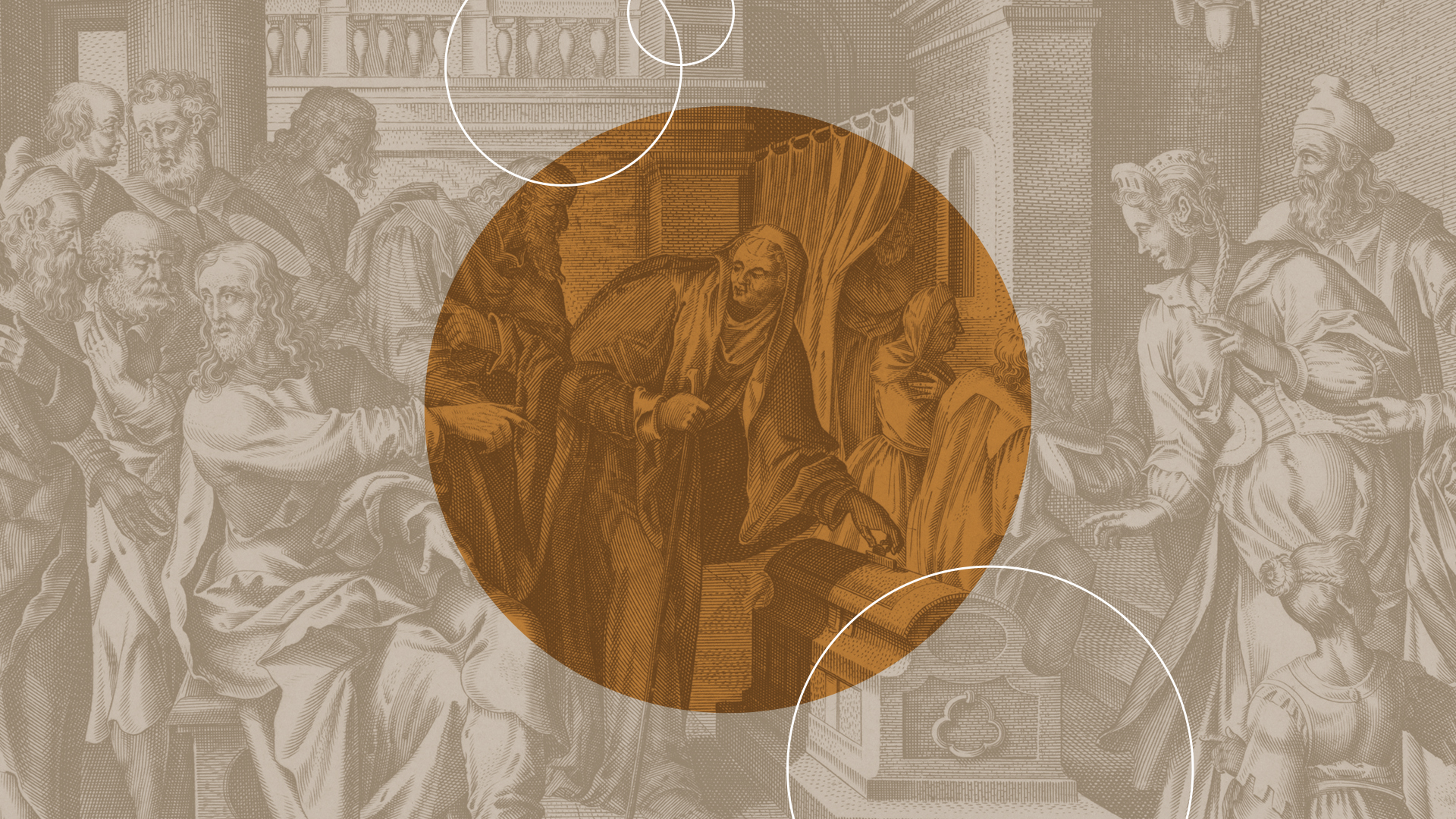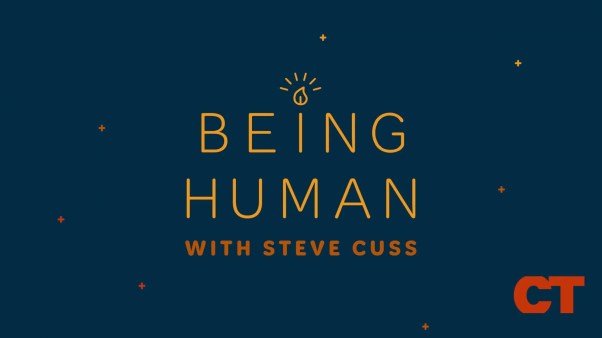These days, Ira Glass is famous for inspiring an infinite number of podcasts that want to be just like his public radio show This American Life. But back in the mid-1990s, Glass’s initial claim to fame was for raising money during public radio pledge drives. Glass initially grew his show by telling station program directors that they could have his pledge spots so long as they carried his program. They still do: He remains public radio’s most effective fundraiser by far, with his earnest pleas to “give selfishly” to keep listeners’ favorite shows on the air and reminding them why they love public radio.
Churches have an Ira Glass too—a ringer guaranteed to bring the checkbooks out every time. And what makes her even more remarkable than Ira Glass is that she doesn’t even say a word. She just throws two small coins into an offering box and walks away.
The “poor widow” of Mark 12 and Luke 21 gets more homiletical airtime than most of the apostles. She’s there for every Stewardship Sunday, front and center of every capital campaign. Her two small coins have inspired billions of additional gifts as she’s served as an example of the kind of giving God desires.
And so far as they go, the lessons we’ve taken from the story of the widow’s mite are true: God cares not about the size of the gift but about the size of the sacrifice. What matters is not the amount that one gives but the amount that one keeps for oneself.
But this isn’t the story where Jesus commands, Sell all you have and give. This is the story where Jesus commands, Watch out! Perhaps this story isn’t so much about how we should be more like the widow. Perhaps it’s more about what she’s doing in the temple in the first place and why she only has two copper coins.
As the context of this event makes plain, Jesus isn’t taking his disciples on a field trip to the temple so he can show them how generous the poor widow is. He’s there to judge and to warn. He has cursed the fig tree for its lack of fruit. He has overturned the tables of the moneychangers. He has refused the chief priests’ questions about his authority, and told them that their problem is that they do not know the Scriptures or the power of God. He’s taught the people that the Messiah would be even greater than David. “The large crowd listened to him with delight,” Mark concludes (12:37). Then Jesus turns from the crowd to his disciples and gives a specific warning: “Watch out!”
Watch out for the teachers of the law. They like to walk around in flowing robes and be greeted with respect in the marketplaces, and have the most important seats in the synagogues and the places of honor at banquets. They devour widows’ houses and for a show make lengthy prayers. These men will be punished most severely. (vv. 38–40, emphasis added)
What seems to draw Jesus’ wrath and promise of severe judgment is not simply the teachers’ prideful desires, but that “they devour widows’ houses.” What immediately follows is a demonstration: Jesus calls his disciples and points out one of the widows whose house has been devoured. “Truly I tell you,” he says, “this poor widow has put more into the treasury than all the others. They all gave out of their wealth; but she, out of her poverty, put in everything—all she had to live on” (vv. 43–44). Or, as Darrell Bock translates it, she put in “all that remained of her life.”
The widow is an example, yes. And an example of sacrificial giving, sure. There are clear connections between Jesus and the poor widow both giving their whole life. But we too often miss that she is most directly an example of the oppressed widows that Jesus has just called attention to!
Commentaries agree that whatever Jesus specifically meant by “they devour widows’ houses” is lost to history. Maybe it was individual acts of manipulation, theft, and abuse. Or maybe it was a systemic problem of neglect and oppression. We don’t know exactly what the scribes and teachers of the law were doing that ate widows out of house and home, but we do know what they were supposed to be doing. Deuteronomy 26 spells it out directly: A tenth of everything God’s people produced wasn’t just to be given to the Levite religious leaders. It was also supposed to go to “the foreigner, the fatherless and the widow, so that they may eat in your towns and be satisfied” (v. 12). The teachers of the law knew that this was God’s plan for how people would take care of the vulnerable among them. The widow wasn’t supposed to be giving to the temple treasury. The temple treasury was there, in part, to give to the widow.
Maybe the religious leaders took from her; maybe they simply withheld what she was due. In either case, her response was to treat the temple as Jesus told his disciples to treat “an evil person” at the Sermon on the Mount: If someone takes your shirt, give them your coat (Matt. 5:39–40). If the temple’s teachers take everything but two small coins, give them the two small coins too. She has cast herself completely on the mercy of God alone, knowing the temple leaders would do nothing for her.
The disciples tried to look on the bright side. The very next thing that happens after they leave the temple is one of Jesus’ disciples points to the temple and says, “Look, Teacher! What massive stones! What magnificent buildings!” (Mark 13:1). The widow’s two coins may not have made much of a difference, but look! At least she’s part of this literally awesome project that’s bigger than herself. She’s giving to the temple, the dwelling place of God on Earth.
Jesus replies that the religious leaders will be judged most severely. The temple will be destroyed. The fig tree will wither under God’s curse. “Do you see all these great buildings?” Jesus asks. “Not one stone here will be left on another; every one will be thrown down” (v. 2).
And this is the story we turn to when we need money to launch a new building campaign?
Perhaps it should be. What if we launched every major stewardship project by taking a look at the widow’s mite, but extended the reading to include the context of Jesus’ warnings? What if every “give until it hurts” challenge was preceded by church leadership asking where giving and spending might be already and actually hurting people?
Keeping the widow in the room isn’t about making listeners feel guilty, any more than her two small coins were about shaming the wealthy givers around her. But her example—as a victim of religious oppression and negligence, not just as an icon of generosity—can help us make better decisions and better communicate them to our congregations.
Rather than leading with photos of the new property site, fundraising presentations could start with describing how a congregation is seeking to take care of vulnerable members and the needy in the community. We might communicate about how to get help as often as we pass the plate. “Does everyone know how to give electronically?” could be an automatic prompt to also ask ourselves, “Do our widows, single parents, and others who are lonely or in need know how to find community and care here?”
Our sermons on the widow’s mite aren’t wrong. I really do want to be more like the widow—generous beyond “ten percent for God” thinking, rejecting mammon’s lie that two small coins can be a safety net. But this woman and her story are more than a challenge to ask ourselves, How do we give? She’s also a challenge, especially to those in church leadership, to ask, How do we take?
Ted Olsen is Christianity Today’s executive editor.










